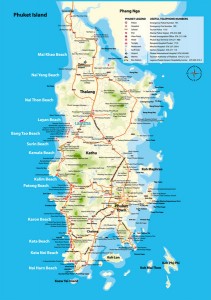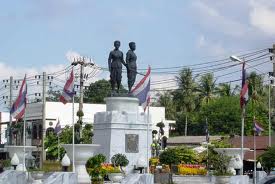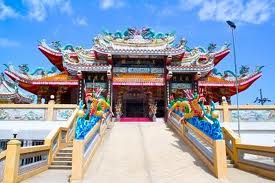The History of Phuket
Phuket was known as Bukit, Junk-Ceylon or Muang Talang. Bukit is the name that derives, in meaning from the Tamil Manikram or Crystal Mountain. Junk- Ceylon is the name that was found on all the old maps (Ptolemy’s Geographical), written by the Greek, Alexandrian, the Geographer. In the third century A.D. and it was also named Muang Talang from the part of the Srivichai and Siri Tahmarach empires. It was also called Monton Phuket in Rama V’s reign.
Heroines Monument.
The most important historic event is the story of two heroines. Thao Thep Kasatri (Kunying Jan) and Thao Sri Sunthorn (Kunying Mook). The people of Phuket were assembled led by these two heroines to fight with the Burmese. The Burmese army came to Phuket to attack, but after a month’s long siege, the Burmese were forced to depart, well and truly beaten.
On 13th March 1785, Kunying Jan and her sister were credited with the successful defence of Phuket. In recognition King Rama 1, bestowed upon Kunying, the honour of Thao Thep Kasatri! A title usually only reserved for Royalty. According to legend local Phuket women were disguised as men to become male soldiers.
Phuket Island as a long history, in centuries past Phuket was an important trading post on the eastern shore of the Bay of Bengal, shipping and dealing with sailors from the Arab and Malay worlds. India, Burma, China and, of course Siam. By the 16th century, Phuket was well known to the Europeans, first Portuguese and Dutch, and then the English and French sailed to its fabled shore.
At that time, Phuket enjoyed an unprecedented surge in wealth, when tin was found to be available in large quantities. Ambitious hardworking miners and businesses flocked to Phuket and from the province South China came to the island as well. Nowadays there is still a Chinese element in Phuket cuisine, architecture, Chinese community and Chinese Temples.
Tags: Chinese Temple, Heroines Monument, Junk-Ceylon, Muang Talang, Phuket, Scuba Cat Diving, Thailand








Scubacat Community